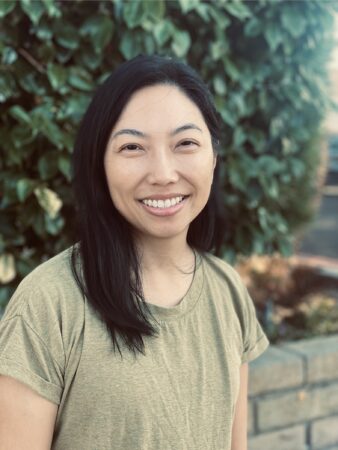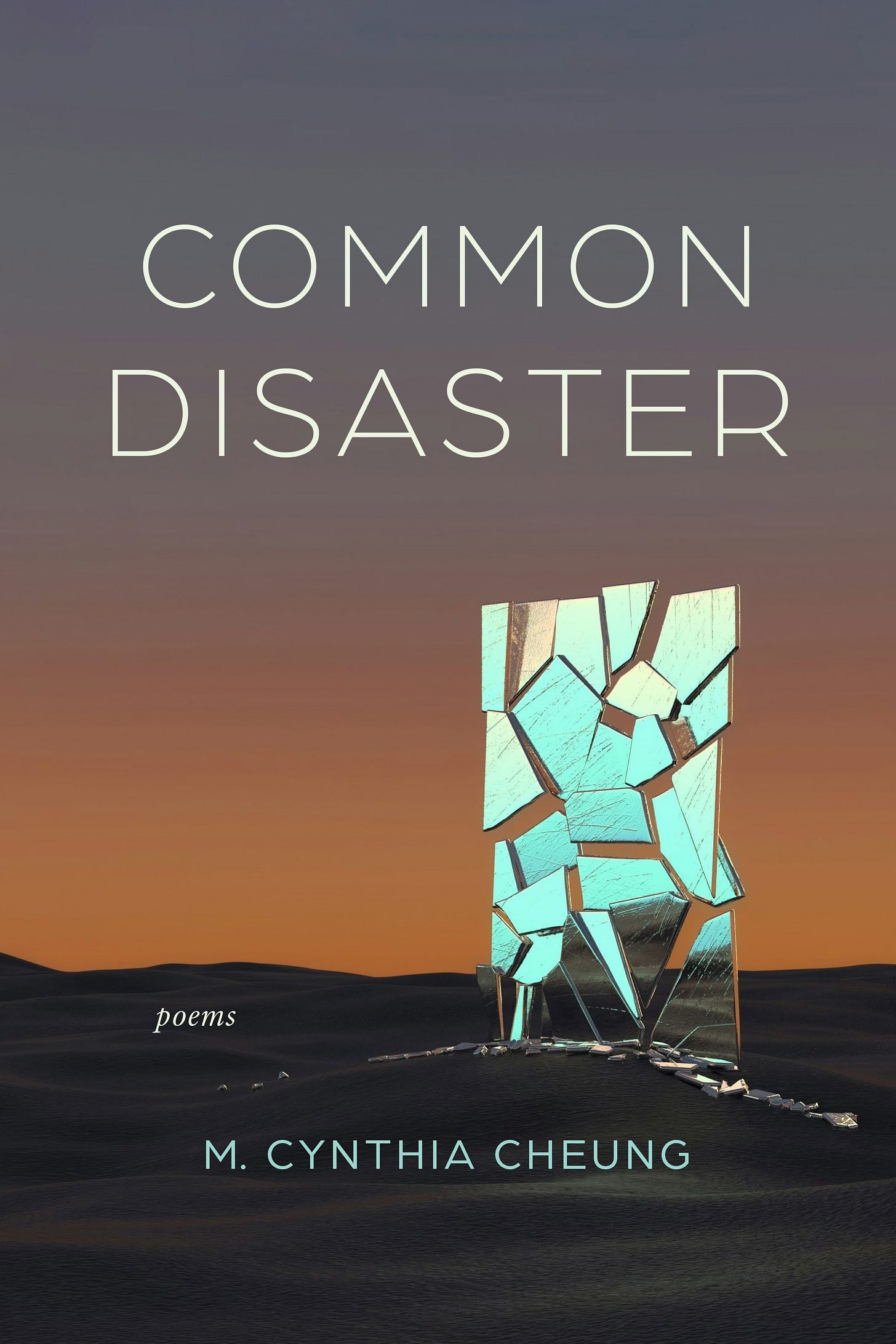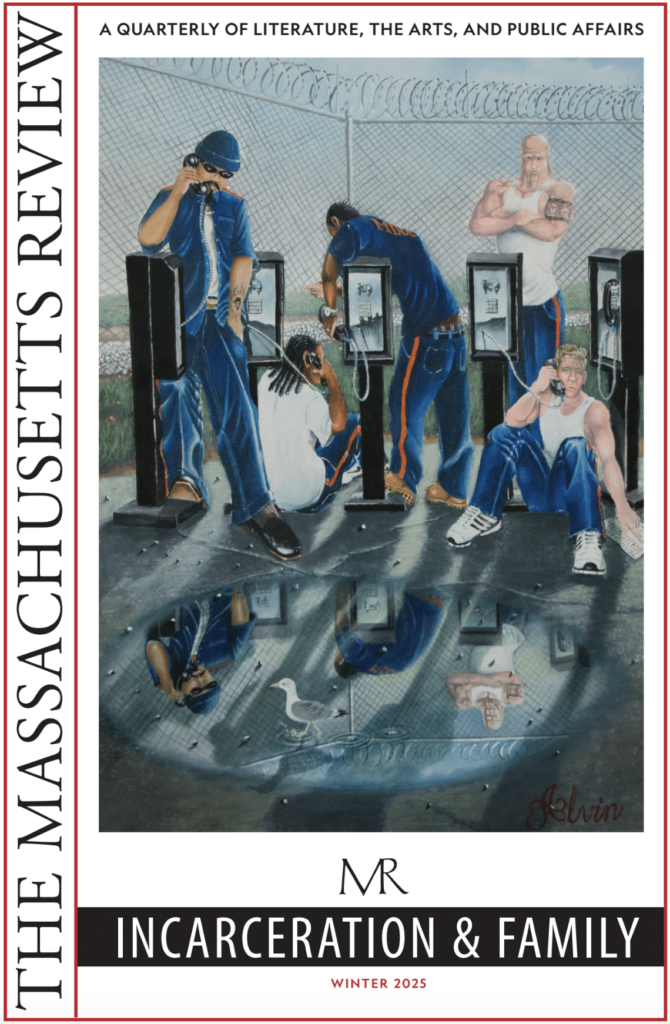10 Questions for M. Cynthia Cheung

It’s been reported: in Bucha,
people are collecting bodies stuffed
with bullets, hands tied behind their backs.
—from M. Cynthia Cheung’s “The Amount of Death and Pain in the City Was Extraordinary,” Volume 66, Issue 1 (Spring 2025)
Tell us about one of the first pieces you wrote.
Around the time I began writing poetry, I got interested in medieval Saxon history, particularly the famous Sutton Hoo royal ship burial which is thought to date from the Beowulf poet’s time. There are also commoners interred in the area, but these were individuals who had been executed and their remains mutilated after death. Some were buried with their arms and legs still bound. That complete absence of forgiveness into death really struck me, and I wrote one of my first “real” poems “The Sand-People of Sutton Hoo.”
What writer(s) or works have influenced the way you write now?
I love hearing how artists in other creative fields approach their work, especially in the theater arts, and I’ve been listening to a lot of audio dramas, which are interesting since they use techniques from multiple genres. As far as poets go, I’d say Agha Shahid Ali is my first and foremost influence. Every time I re-read one of his poems, I am welcomed again into his tender, melancholic isolation. Seamus Heaney is the first poet whose work I encountered outside the school setting, and I always return to his poems with joy. Last year, I began reading translations of Rimbaud, and I’ve also been learning about classical Chinese poetry. I really enjoyed Ha Jin’s The Banished Immortal, which features his translations of Li Bai’s most well-known pieces.
What other professions have you worked in?
My first job was as a bank teller. I’ve also been a teaching assistant in vertebrate anatomy and a genetics lab tech. These days I’m a hospital-based physician practicing internal medicine.
What did you want to be when you were young?
As a very young kid, I wanted to be a cool animal—anything but human. As a teen, I thought I was going to be a paleontologist and study either dinosaurs or saber-toothed cats.
What inspired you to write this piece?
The topic of “a supreme court opinion 22 june 2022” is, of course, the Dobbs decision regarding a woman’s right to abortion. The strike-out form is after one of the phenomenal White Alice poems by Joan Naviyuk Kane. I wrote “The Amount of Death and Pain in the City Was Extraordinary” shortly after news from Bucha, Ukraine, began coming out. I think without serious, conscious effort, we will always allow our empathy to fail in the face of far-off suffering, especially if we perceive no material impact in our daily lives or if we think we have no meaningful connection to a distant horror. We can see this happening right now in America, in our indifference to Israel’s gross human rights violations in the West Bank and its utter devastation of Gaza—all of which happen to be made or enforced with American permission and taxpayer-funded weapons.
Is there a city or place, real or imagined, that influences your writing?
As an assimilated Chinese-American growing up in the Midwest, I really didn’t give much thought to the history of the Asian continent. Over the past year and a half, though, the Silk Roads and all the Asian countries that were part of it (a majority of the continent) have occupied my mind and changed the direction of my work. I wrote an essay about this which you can find in AGNI Online, if you’re curious.
Do you have any rituals or traditions that you do in order to write?
I always start with reading some poems. I simply can’t write if I don’t read first! I want to have a stack of books next to me. If I’m writing at home, the house must be tidy and clean. Apart from that, I don’t have any writing rituals these days.
If you could work in another art form what would it be?
Though I’ve never tried, I am fascinated by scriptwriting. I wouldn’t mind being able to play a musical instrument, either. Technically I can play the violin, but it doesn’t interest me. Maybe something more versatile like guitar or ukulele.
What are you working on currently?
I think I’m about a third of the way through my second manuscript. It’s been really exciting to explore poetic forms from Asia, such as the Arabic qasida and the Chinese lüshī.
What are you reading right now?
I recently finished Victoria Chang’s Obit, Arthur Sze’s Silk Dragon: Translations from the Chinese, and Chronicle of Drifting by Yuki Tanaka and am looking forward to many of this year’s forthcoming books, in particular No Rhododendron by Samyak Shertok and City of Dis by Randall James Tyrone. Of course, like everyone else, I have a great stack of books waiting to be read, including those by Refaat Alareer (rest in power), Lisa Ampleman, Jose Hernandez Diaz, Ayo Falome, Olatunde Osinike, and Natalie Shapero. I spent a large part of the last year and a half reading nonfiction to research the manuscript, so I’m taking a break from that and instead my prose reading has been mostly escapist high fantasy from the 1990s, with a thriller or Icelandic crime novel thrown in here and there.
M. CYNTHIA CHEUNG is the author of Common Disaster (Acre Books). Her poems can be found in AGNI, Four Way Review, Gulf Coast, Pleiades, and swamp pink, among others, and her work has been supported by an Idyllwild Arts Writers Week fellowship. She is a practicing physician in internal medicine and serves as a judge for Baylor College of Medicine’s annual Michael E. DeBakey Medical Student Poetry Award.




